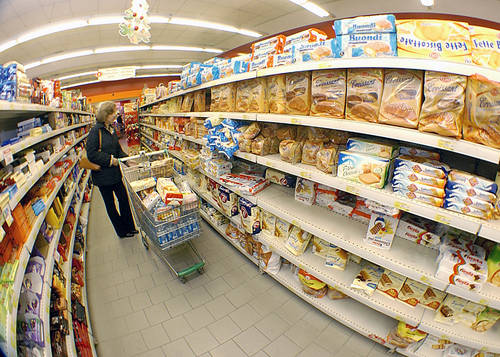Codex Texts
Codex standards and related texts are voluntary in nature. They need to be translated into national legislation or regulations in order to be enforceable.

Codex standards can be general or specific.
General Standards, Guidelines and Codes of Practice
These are the core Codex texts and apply to all products and product categories. These texts typically deal with hygienic practice, labelling, additives, inspection & certification, nutrition and residues of veterinary drugs and pesticides.
Commodity standards
Codex commodity standards refer to a specific product although increasingly Codex now develops standards for food groups i.e. one general standard for fruit juices and nectars as opposed to one per fruit.
The harmonization of food standards contributes to the protection of consumer health and to the fullest possible facilitation of international trade.
How a Codex Standard is developed.
Like all other aspects of the Commission’s work, the procedures for preparing standards are well defined, open and transparent.
A national government or a subsidiary committee of the Commission usually makes the proposal for a standard to be developed They then prepare a discussion paper that outlines what the proposed standard is expected to achieve, and then a project document that indicates the time frame for the work and its relative priority.
- Getting started - The Commission reviews the project document and decides whether the standard should be developed as proposed.
- Elaboration of the standard - The preparation of a proposed draft standard is arranged by the Commission Secretariat and circulated to member governments, observer organizations and other Codex committees for two rounds of comments and special advice.
- Conclusion - Standards can take several years to develop. Once adopted by the Commission, a Codex standard is added to the Codex Alimentarius and published here on the web site.
Standards
Popular Latest
CXS 193-1995
General Standard for Contaminants and Toxins in Food and Feed
CXC 1-1969
General Principles of Food Hygiene
CXS 1-1985
General Standard for the Labelling of Prepackaged Foods
CXG 2-1985
Guidelines on Nutrition Labelling
CXM 2
Maximum Residue Limits (MRLs) and Risk Management Recommendations (RMRs) for Residues of Veterinary Drugs in Foods
CXS 192-1995
General Standard for Food Additives
CXS 306-2023
Standard for Chilli Sauce
CXS 294-2023
Standard for Gochujang
CXA 6-2023
List of Codex Specifications for Food Additives
CXS 356R-2023
Regional Standard for Fermented Noni Fruit Juice (North America and South West Pacific)
CXC 82-2023
Code of Practice for the Prevention and Reduction of Mycotoxins Contamination in Cassava and Cassava-Based Products
CXG 101-2023
Guidelines on Recognition and Maintenance of Equivalence of National Food Control Systems (NFCS)
CXG 102-2023
Principles and Guidelines on the Use of Remote Audit and Inspection in Regulatory Frameworks
CXS 354R-2023
Regional Standard for Soybean Products Fermented with Bacillus Species (Asia)
CXS 355R-2023
Regional Standard for Cooked Rice Wrapped in Plant Leaves (Asia)
CXG 99-2023
Guidelines for the Control of Shiga Toxin-Producing e. Coli (STEC) in Raw Beef, Fresh Leafy Vegetables, Raw Milk and Raw Milk Cheeses, and Sprouts
CXG 100-2023
Guidelines for the Safe Use and Reuse of Water in Food Production and Processing
CXG 95-2022
Guidelines for ready-to-use therapeutic foods (RUTF)
CXS 348-2022
Standard for Onions and Shallots
CXS 349-2022
Standard for Berry Fruits
CXC 81-2022
Code of Practice for the Prevention and Reduction of Cadmium Contamination in Cocoa Beans
CXG 97-2022
Guidelines for the Recognition of Active Substances or Authorized Uses of Active Substances of Low Public Health Concern that are Considered Exempted from the Establishment of Maximum Residue Limits or do not give rise to Residues
CXG 96-2022
Guidelines on the Management of Biological Foodborne Outbreaks
CXG 98-2022
Guidelines for Developing Harmonized Food Safety Legislation
for the CCAFRICA Region
CXS 352-2022
Standard for Dried Seeds – Nutmeg
CXS 350R-2022
Regional Standard for Dried Meat (Africa)
CXS 353-2022
Standard for Dried or Dehydrated Chilli Pepper and Paprika
CXG 93-2021
Principles and Guidelines for the assessment and use of voluntary third-party assurance programmes




